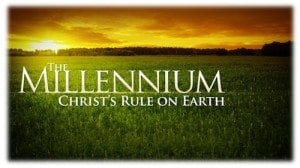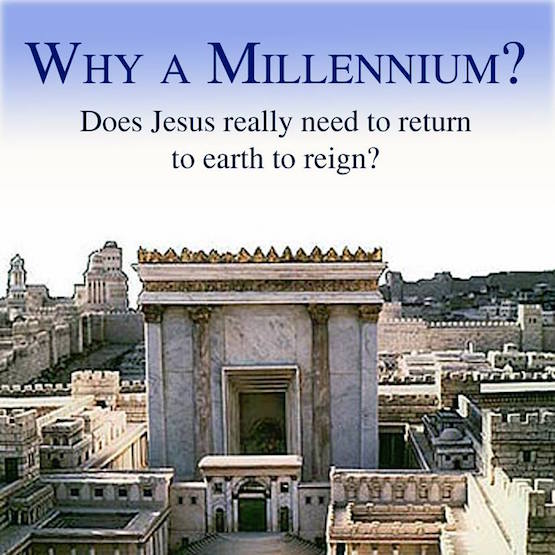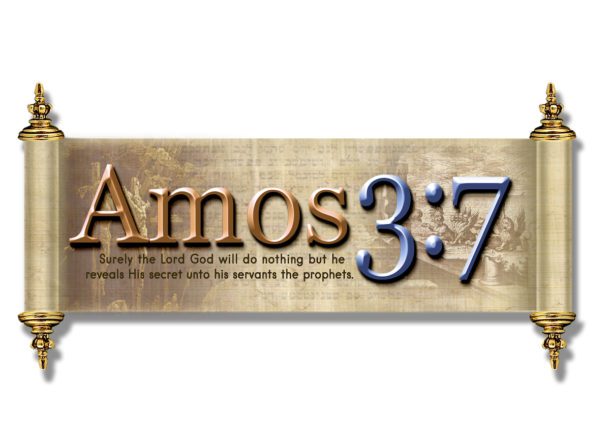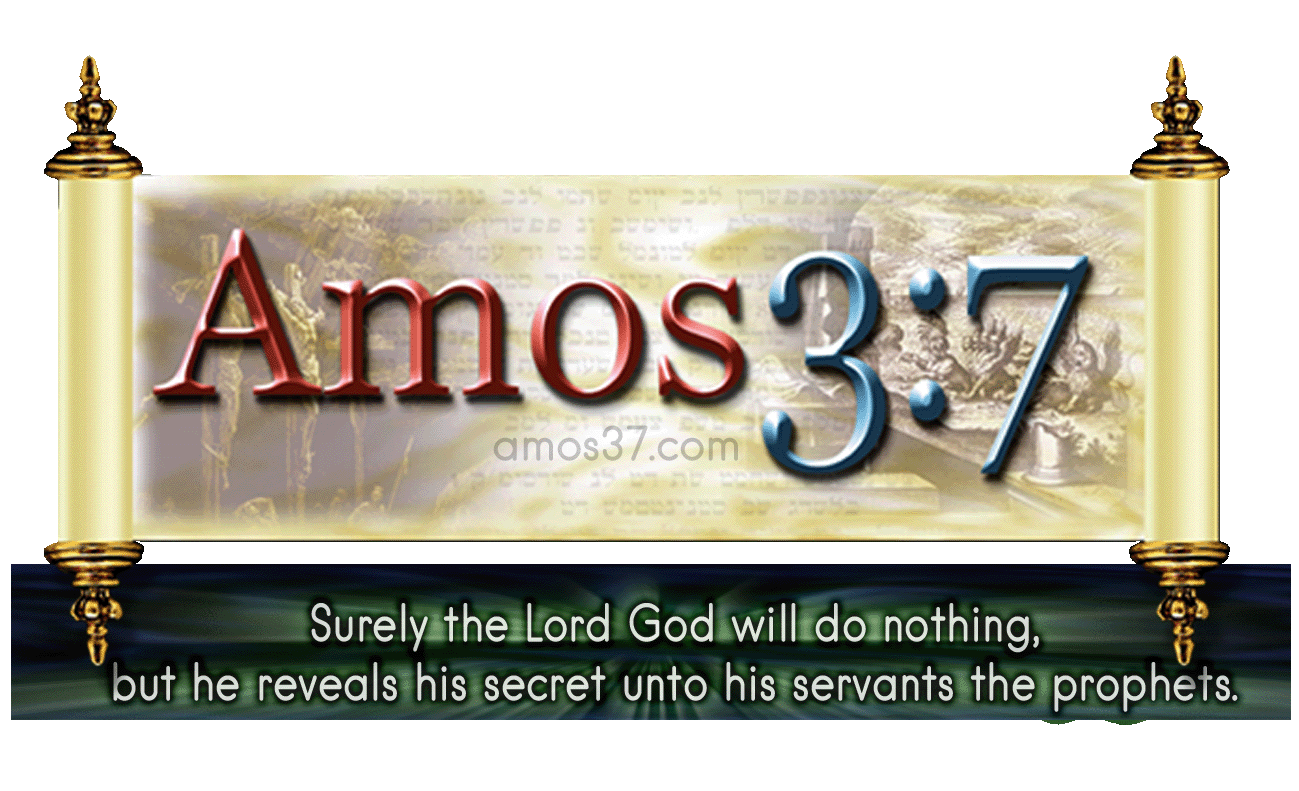What is the Millennium? Is a great question. We have an article here that has all the major views on this topic of the Millennium. It is in an outline format that contrasts the various scholar’s views on the subject. Here at Amos37 we hold to a literal 1000 year period that will ultimately fulfill the Davidic Covenant. We have much to say on the topic which will be discussed in other sessions. There are many things left to happen according to the bible and the bible is full of references to this time period before the eternal Kingdom commences.
What is the Millennium?
When Christians discuss their millennial views, they are speaking of their interpretation of the much-debated passage in Revelation 20:1-10.
“Then I saw an angel coming down from heaven, holding the key of the abyss and a great chain in his hand. And he laid hold of the dragon, the serpent of old, who is the devil and Satan, and bound him for a thousand years; and he threw him into the abyss, and shut it and sealed it over him, so that he would not deceive the nations any longer, until the thousand years were completed; after these things he must be released for a short time.
“Then I saw thrones, and they sat on them, and judgment was given to them. And I saw the souls of those who had been beheaded because of their testimony of Jesus and because of the word of God, and those who had not worshiped the beast or his image, and had not received the mark on their forehead and on their hand; and they came to life and reigned with Christ for a thousand years. The rest of the dead did not come to life until the thousand years were completed. This is the first resurrection. Blessed and holy is the one who has a part in the first resurrection; over these the second death has no power, but they will be priests of God and of Christ and will reign with Him for a thousand years.
“When the thousand years are completed, Satan will be released from his prison, and will come out to deceive the nations which are in the four corners of the earth, Gog and Magog, to gather them together for the war; the number of them is like the sand of the seashore. And they came up on the broad plain of the earth and surrounded the camp of the saints and the beloved city, and fire came down from heaven and devoured them. And the devil who deceived them was thrown into the lake of fire and brimstone, where the beast and the false prophet are also; and they will be tormented day and night forever.” (NASB)
Why Is This Millennium in Question?
 Some see this as a future earthly theocracy by which Christ will rule over the nations for a thousand years. Others see it as a time during which Christ will rule the earth from heaven through the life-changing power of the Gospel. Still, others look at it in another way. And the multitude of others holds a multitude of other interpretations.
Some see this as a future earthly theocracy by which Christ will rule over the nations for a thousand years. Others see it as a time during which Christ will rule the earth from heaven through the life-changing power of the Gospel. Still, others look at it in another way. And the multitude of others holds a multitude of other interpretations.
One’s final interpretation of the thousand years from Revelation 20 depends on more upon certain factors related to a Christian’s hermeneutic than the strict text of the ten much-debated verses. There are several ways in which orthodox Christians choose to come to Scripture (these are discussed in our FAQ explaining how to interpret Scripture and depending on which of these methods is used, one’s understanding of eschatological issues — and a host of others as well — will experience changes both significant and trivial. And since one interprets Scripture primarily through the filter of his understanding of other passages in the Word, one’s millennial view does have an effect (whether great or small) on the way in which he lives his life.
The Views
Since space is limited, we are unable to treat all the current millennial views, but we do hope to give a brief, but accurate account of the main tenets of the four main existing viewpoints as well as some of the reasons — both Scriptural and interpretive — behind each view. These four main eschatological systems that we shall treat are as follows: dispensational premillennialism, historic premillennialism, postmillennialism, and amillennialism. Please realize that though these views differ significantly on the topic at hand, the Christians who disagree on these matters agree with each other on probably ninety percent of the rest of the Christian life.
Also, in coming to one’s own view, there are certain poor arguments from which one should shy away. A couple of these are arguments from history and arguments from the deeds of those who are proponents of a given view. Arguments from history, while having some use, should generally be avoided for the simple fact that not only were the eschatological views of the early church largely undefined, but most of the Second and Third Century church fathers held to some beliefs that would today be considered odd or even unorthodox. Arguments against an idea from the “bad fruit” of that idea’s proponents, while a popular form of argumentation, should be left behind; as it happens, every view has had its embarrassing supporters who claim to act on their beliefs but represent something altogether outside of Christianity. Amillennialists are accused because Nazis misapplied some of their beliefs. Postmillennialists are judged because some over-zealous rebels in the Sixteenth and Seventeenth Centuries misused their principles. Premillennialists come under attack because of both a) the majority of Christian cults take up their ideas of end-times cataclysm and b) some of those who profess premillennialism get caught up in setting dates for Christ’s return. With those cautions noted, we shall examine each of these four views individually.
Dispensational Premillennialism
Definition:
Dispensational premillennialists hold that Christ will come before a seven-year period of intense tribulation to take His church (living and dead) into heaven. After this period of fulfillment of divine wrath, He shall then return to rule from a holy city (i.e., the New Jerusalem) over the earthly nations for one thousand years. After these thousand years, Satan, who was bound up during Christ’s earthly reign, will be loosed to deceive the nations, gather an army of the deceived, and take up to battle against the Lord. This battle will end in both the judgment of the wicked and Satan and the entrance into the eternal state of glory by the righteous. This view is called Premillennialism because it places the return of Christ before the millennium and it is called dispensational because it is founded in the doctrines of dispensationalism.
Features and Distinctions:
- The favored method of interpretation: strict literal.
- Israel and the church: views church and Israel as two distinct identities with two individual redemptive plans.
- The Rapture of the Church: The church is raptured before a seven-year tribulation (the seventieth week of Daniel – Daniel 9:24-27). This Tribulational period contains the reign of the AntiChrist.
- Millennium: Christ will return at the end of the great tribulation to institute a thousand-year rule from a holy city (the New Jerusalem). Those who come to believe in Christ (the elect) during the seventieth week of Daniel (including the 144,000 Jews) and survive will go on to populate the earth during this time. Those who were raptured or raised previous to the Tribulational period will reign with Christ over the millennial population.
- Miscellaneous:
- Higher degrees of interpreting present-day events in the light of end-times prophecy.
- The Millennium will see the re-establishment of temple worship and sacrifice as a remembrance of Christ’s sacrifice.
- From the millennium-ending “white throne” judgment (by which Satan and all unbelievers will be thrown into the lake of fire) Christ and all saints will proceed into eternal glory.
- Major proponents: John Walvoord, Charles Ryrie, Louis Sperry Chafer, J. Dwight Pentecost, Norman Geisler, Charles Stanley, Chuck Smith, and Chuck Missler.
Synopsis:
View the visual interpretation
A strictly literal hermeneutic is foundational to the dispensational premillennialist viewpoint. Interpreting Scripture in this manner will, in fact, demand such perspectives unique to dispensationalism as:
- an earthly kingdom of God from which Christ will reign
- a future redemptive plan for national Israel
- a seven year period of great tribulation
- the rejection of prophetic idiom
Dispensational premillennialism holds that a seven-year tribulation (foreseen in Daniel 9:27) will precede a thousand-year period (Revelation 20:1-6) during which time, Christ will reign on the throne of David (Luke 1:32).
Immediately previous to the time of great tribulation, all the dead saints will rise from their graves and all the living members of the church shall be caught up with them to meet Christ in the clouds (1 Corinthians 15:51-52; 1 Thessalonians 4:15-17); this is known as “the rapture.” During this time of tribulation, there will be three-and-a-half years of world peace under an AntiChrist figure (Daniel 7:8; Revelation 13:1-8) who will establish a world-church (Revelation 17:1-15), followed by three-and-a-half years of greater suffering (/help.htmlRevelation 6-18). At the end of this period, Christ will return (Matthew 24:27-31; Revelation 19:11-21), judge the world (Ezekiel 20:33-38; Matthew 25:31; Jude 14-15), bind Satan for one thousand years (Revelation 20:1-3), and raise the Old Testament and Tribulation saints from the dead (Daniel 12:2; Revelation 20:4).
At this time, the millennial reign will begin and Christ will reign politically over the earth at this time from His capital in Jerusalem (Isaiah 2:3). Throughout His reign, there will be no war (Isaiah 2:4) and even the natures of animals will dwell in harmony (Isaiah 11:6-9). At the end of this era of peace, Satan will be released and instigate a colossal (but futile) rebellion against God (Revelation 20:7-9). After this fated battle, Satan and the wicked are cast into the lake of fire (Revelation 20:10), while the righteous proceed into their eternal state in the realm of the new heaven and the new earth Revelation 21:1ff).
Bibliography:
- Pentecost, J. Dwight. Things to Come. Grand Rapids: Zondervan Publishing House, 1978. (ISBN 0310308909)
- Ryrie, Charles. The Basis for Premillennial Faith. New York: The Loizeaux Brothers, 1953. (ISBN 0872137414)
- Walvoord, John. Every Prophecy of the Bible. Colorado Springs: Chariot Victor Publishing, 1999. (ISBN 1-56476-758-2)
- Walvoord, John. The Revelation of Jesus Christ. Chicago: Moody Press, 1966. (ISBN 0-8024-7310-5)
- Blaising, Craig A. “Premillennialism.” Three Views of the Millennium and Beyond. Ed. Darrell L. Bock. Grand Rapids: Zondervan Publishing House,1999. (ISBN 0-310-20143-8)
Historical Premillennialism
Definition:
Historical premillennialists place the return of Christ just before the millennium and just after a time of great apostasy and tribulation. After the millennium, Satan will be loosed and Gog and Magog will rise against the kingdom of God; this will be immediately followed by the final judgment. While similar in some respects to the dispensational variety (in that they hold to Christ’s return being previous the establishment of a thousand-year earthly reign), historical premillennialism differs in significant ways (notably in their method of interpreting Scripture).
Features and Distinctions:
- The favored method of interpretation: grammatical-historical.
- Israel and the church: The church is the fulfillment of Israel.
- Kingdom of God: present through the Spirit since Pentecost – to be experienced by sight during the millennium after Christ’s return.
- The Rapture: The saints, living and dead, shall meet the Lord in the clouds immediately preceding the millennial reign.
- The Millennium: Christ will return to institute a thousand-year reign on earth. The Millennium will see the re-establishment of temple worship and sacrifice as a remembrance of Christ’s sacrifice.
- Major proponents: George Eldon Ladd, Walter Martin, John Warwick Montgomery, and Theodore Zahn.
Synopsis:
View the visual interpretation
The historical premillennialist’s view interprets some prophecy in Scripture as having literal fulfillment while others demand a semi-symbolic fulfillment. As a case in point, the seal judgments (Revelation 6) are viewed as having fulfillment in the forces in history (rather than in future powers) by which God works out his redemptive and judicial purposes leading up to the end.
Rather than the belief of an imminent return of Christ, it is held that a number of historical events (e.g., the rise of the Beast and the False Prophet) must take place before Christ’s Second Coming. This Second Coming will be accompanied by the resurrection and rapture of the saints (1 Thessalonians 4:15-18); this will inaugurate the millennial reign of Christ. The Jewish nation, while being perfectly able to join the church in the belief of a true faith in Christ, has no distinct redemptive plan as they would in the dispensational perspective. The duration of the millennial kingdom (Revelation 20:1-6) is unsure: literal or metaphorical.
Bibliography:
- Ladd, George Eldon. A Commentary on the Revelation. Grand Rapids: William B. Eerdmans Publishing Company, 1972. (ISBN: 0802816843)
- Ladd, George Eldon. The Last Things: An Eschatology for Laymen. Grand Rapids: William B. Eerdmans Publishing Company, 1982.
- Ladd, George Eldon. The Gospel of the Kingdom. Grand Rapids: William B. Eerdmans Publishing Company, 1959. (ISBN: 0802812805)
- Culver, Robert Duncan. Histories & Prophecies of Daniel. Winona Lake, Indiana: BHM Books, 1980. (ISBN: 0-88469-131-4)
- Campbell, Donald K. and Townsend, Jeffrey L. A Case for Premillennialism: A New Consensus. Chicago: The Moody Press, 1992.
Postmillennialism
Definition:
The postmillennialist believes that the millennium is an era (not a literal thousand years) during which Christ will reign over the earth, not from a literal and earthly throne, but through the gradual increase of the Gospel and its power to change lives. After this gradual Christianization of the world, Christ will return and immediately usher the church into their eternal state after judging the wicked. This is called postmillennialism because, by its view, Christ will return after the millennium.
Features and Distinctions:
- The favored method of interpretation: covenant-historical.
- Israel and the church: the church is the fulfillment of Israel.
- Kingdom of God: a spiritual entity experienced on earth through the Christianizing affect of the Gospel.
- The Millennium: a Golden Age previous to Christ’s second advent during which Christ will virtually rule over the whole earth through an unprecedented spread of the Gospel; the large majority of people will be Christian.
- Miscellaneous:
- Higher degrees of interpreting First Century events in the light of prophecy; preterism often goes hand-in-hand with postmillennialism.
- Of the several versions of postmillennial eschatology, the reconstructionist’s seems to be gaining the most popularity in the world today.
- Major proponents: Rousas J. Rushdoony, Greg L. Bahnsen, Kenneth L. Gentry Jr., David Chilton, and Gary North.
Synopsis:
View the visual interpretation
There are several different versions of postmillennialism, but one of the views gaining the most popularity is that of the theonomists. Generally speaking, the postmillennial theonomist viewpoint holds to a partial-preterist interpretation of Revelation and the various judgment prophecies in the Gospels, believing that the majority of those prophecies were fulfilled in 70 A.D. at the destruction of the temple in Jerusalem.
The postmillennialist sees the millennial kingdom as the fulfillment of God’s promise to Abraham that he would become “a great nation” and that “all peoples on earth would be blessed” through him (Genesis 12:2-3). This holy reign will come about via gradual conversion (rather than premillennialism’s cataclysmic Christological advent) through the spread of the Gospel — this incremental progress is drawn from many pictures found throughout Scripture (e.g., Deuteronomy 7:22 and Ezekiel 47:1-12).
Postmillennial optimism is also nurtured through many of prophetic psalmody. The Psalms often speak of all nations fearing Him, salvation being known among all nations, the ends of the earth fearing Him, et cetera (e.g., Psalms 2; 22:27; 67:2,7; 102:15; 110:1). Another passage that well feeds this earthly optimism is Isaiah 2:2-3 in which the nations will stream to the righteousness of God.
Bibliography:
- Murray, Iain H. Puritan Hope. The Banner of Truth Trust, 1996. (ISBN: 085151247X)
- Kik, J. Marcellus. Eschatology of Victory. Nutley: Presbyterian & Reformed Publishing, 1974. (ISBN: 0875523137)
- Gentry Jr., Kenneth L. He Shall Have Dominion: An Eschatology of Victory. Institute for Christian Economics, 1992 (ISBN 0930464621)
- Boettner, Loraine. Millennium. Presbyterian Reformed Publishing Company, 1992. (ISBN: 0875521134)
- Mathison, Keith A. Postmillennialism: An Eschatology of Hope. Presbyterian & Reformed Publishing Company, 1999 (ISBN: 0875523897)
- Gentry Jr., Kenneth L. “Postmillennialism.” Three Views of the Millennium and Beyond. Ed. Darrell L. Bock. Grand Rapids: Zondervan Publishing House,1999. (ISBN 0-310-20143-8)
Amillennialism
[ also termed Nunc-Millennialism or inaugurated millennialism ]
Definition:
The amillennialist believes that the Kingdom of God was inaugurated at Christ’s resurrection (hence the term “inaugurated millennialism”) at which point he gained victory over both Satan and the Curse. Christ is even now reigning (hence the term “nunc-millennialism” — nunc means “now”) at the right hand of the Father over His church. After this present age has ended, Christ will return and immediately usher the church into their eternal state after judging the wicked. The term “amillennialism” is actually a misnomer for it implies that Revelation 20:1-6 is ignored; in fact, the amillennialist’s hermeneutic interprets it (and in fact, much of apocalyptic literature) non-literally.
Features and Distinctions:
- The favored method of interpretation: redemptive-historical.
- Israel and the church: The church is the eschatological fulfillment of Israel.
- Kingdom of God: a spiritual reality that all Christians partake in and that is seen presently by faith, but will be grasped by sight at the consummation
- The Rapture: The saints, living and dead, shall meet the Lord in the clouds and immediately proceed to judge the nations with Christ and then follow Him into their eternal state.
- The Millennium: inaugurated with Christ’s resurrection. In an “already/not yet” sense, Christ already reigns over all and is already victorious over Satan.
- Miscellaneous:
- Higher degrees of interpreting prophecy in light of Christ’s advent, death, resurrection, and glorification.
- Relies heavily on a two-age theology
- Major proponents: Meredith Kline, Richard Gaffin, Robert B. Strimple, Gregory K. Beale, and John Murray.
Synopsis:
View the visual interpretation
Eschatology is the study of the eschaton; the eschaton is equated with “last things.” While other views focus on the final days of humankind on earth, amillennialism sees “the last things” as having been initiated at Christ’s resurrection and so, being applicable from the earliest days of the Christian church (cf. Acts 2:16-21; 1 Corinthians 10:11; Hebrews 1:1-2; and 1 Peter 1:20). The amillennialist perspective sees the whole of God’s redemptive revelation as twofold – promise and fulfillment; it also emphasizes that a strict-literal interpretation of Old Testament is not necessarily the most accurate way of determining what the text means.
The Amillennial perspective emphasizes that the coming of the Kingdom of God is a two-part event. The first portion dawned at Christ’s first advent (John the Baptist proclaimed at this time, “The kingdom of heaven is at hand” — Matthew 3:2). At the cross, Christ won the final victory over death and Satan. And then He ascended to reign upon the throne of David forever (Luke 1:32-33; Acts 2:30-31). Now because we “look not at the things which are seen, but at the things which are not seen; for the things which are seen are temporal, but the things which are not seen are eternal” (2 Corinthians 4:18) — because of this, the amillennialist sees the final things already accomplished, though not yet seen by sight, but by faith (2 Corinthians 5:7).
An important note is the Amillennialists view of the church in this world: a role of suffering. The Christian will be hated by all, just as was Christ (Matthew 10:22), for a servant is not greater than his master. Seeing this as the church’s role on earth — to suffer as did Christ — the Amillennialist can hold no hope for an earthly exaltation and longs for the fulfillment of the second stage of the coming of the Kingdom.
This second stage of the Amillennial perspective is the final consummation of all the heavenly promises. The Christian will no longer see by faith alone, but by sight. All the shadowy things will pass away and our eternal reign with Christ will begin. The amillennialist, expecting no earthly glory for the church, places all his hope on this heavenly glory.
Bibliography:
- Hoekema, Anthony. The Bible and the Future. Grand Rapids: William B. Eerdmans Publishing Company, 1994. (ISBN: 0802808514)
- Hendrikson, William. More Than Conquerors: An Interpretation of the Book of Revelation. Grand Rapids: Baker Books-, 1939. (ISBN: 0801057922)
- Beale, G.K. The Book of Revelation: A Commentary on the Greek Text. Grand Rapids: William B. Eerdmans Publishing Company, 1999. (ISBN: 0-8028-2174-X)
- Strimple, Robert B. “Amillennialism.” Three Views of the Millennium and Beyond. Ed. Darrell L. Bock. Grand Rapids: Zondervan Publishing House,1999. (ISBN 0-310-20143-8) Extra Credit:
- Vos, Geerhardus. The Pauline Eschatology. Grand Rapids: William B. Eerdmans Publishing Company, 1953.
- Vos, Geerhardus. Biblical Theology. Grand Rapids: William B. Eerdmans Publishing Company, 1953.
- Ridderbos, Herman. The Coming of the Kingdom. Philadelphia: Presbyterian & Reformed Publishing Company, 1962. (ISBN: 0-87552-408-7)
Conclusion
So what should be concluded from all of this? Before coming to a dogmatic millennial perspective, the lone fact that so many well-intentioned and intelligent Christians believe so variously when it comes to Revelation 20 must give us pause. The Book of Revelation itself is probably the most curious and oft-debated piece of the canon. This ought to place us in a position of caution when either accepting or dismissing another’s interpretation.
As with any body of Christians, there are members of the Blue Letter Bible team with differing opinions on the matter. However, in light of all the Scriptures on the subject, the Blue Letter Bible feels that the most consistent viewpoint with a literal interpretation of the Bible is dispensational premillennialism. Our ultimate advice is to go to the Bible itself (Acts 17:11). The best way in which to interpret the Word of God is to see what it has to say about itself. And if, in the final analysis, you are yet undecided, do not fear for salvation is not built or broken on Revelation 20, but on the person of Jesus Christ.
Blue Letter Bible – Help, Tutorials, and FAQs
Connect with Amos37
Free Resources for the growing Christian.
“But grow in grace, and [in] the knowledge of our Lord and Saviour Jesus Christ. To Him [be] glory both now and for ever. Amen.” 2 Peter 3:18
Blue Letter Bible Free Online Bible & Study Tools & Commentaries
Bible Classes College Level For Free to Enroll Track your progress.
Our Own Free Discipleship Course In Video HD.




















I saw your comment on Facebook about the Amillennial point of view. I was raised Roman Catholic and was a Lutheran for a while. I have pondered the same question about the Amillennial point of view and have reached several conclusions. It is a false teaching that arose out of hatred for the Jews. The church, at the time that this teaching began had a strong hatred of the Jews and declared that the Church is now Israel and had inherited all the promises of God. Of course, they had to somehow deal with all the numerous Scriptures that pertained to the future of Israel and the Millennial Reign of Christ from the Old and New Testament, so they allergorized (Spiritualized) Scripture. Never mind that all the Scriptures about the Christ was literal. These false teachings have done much harm.